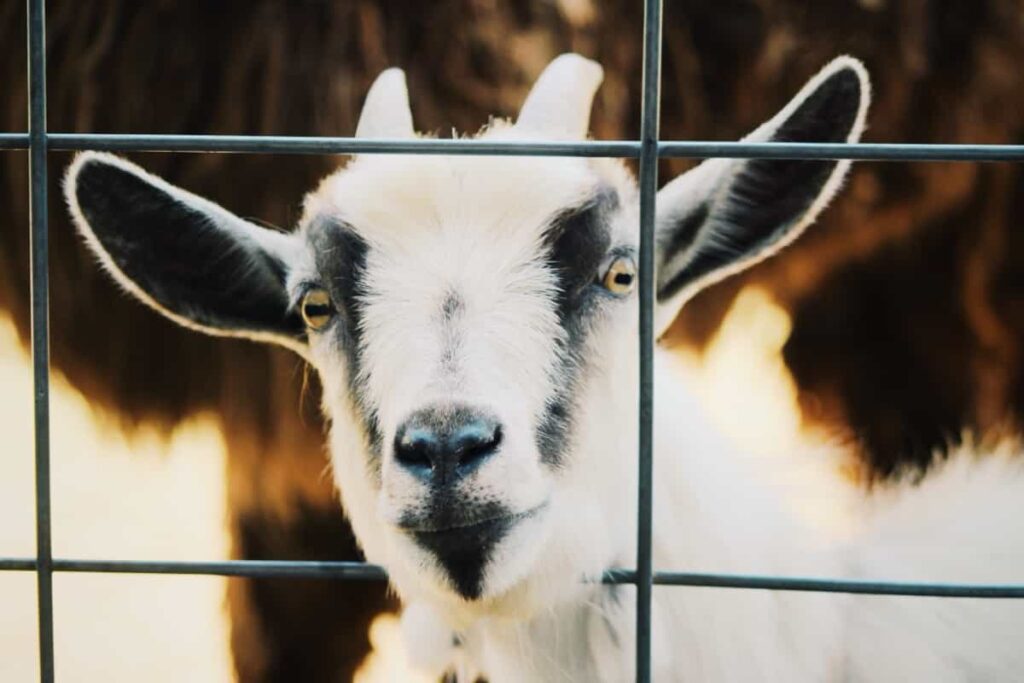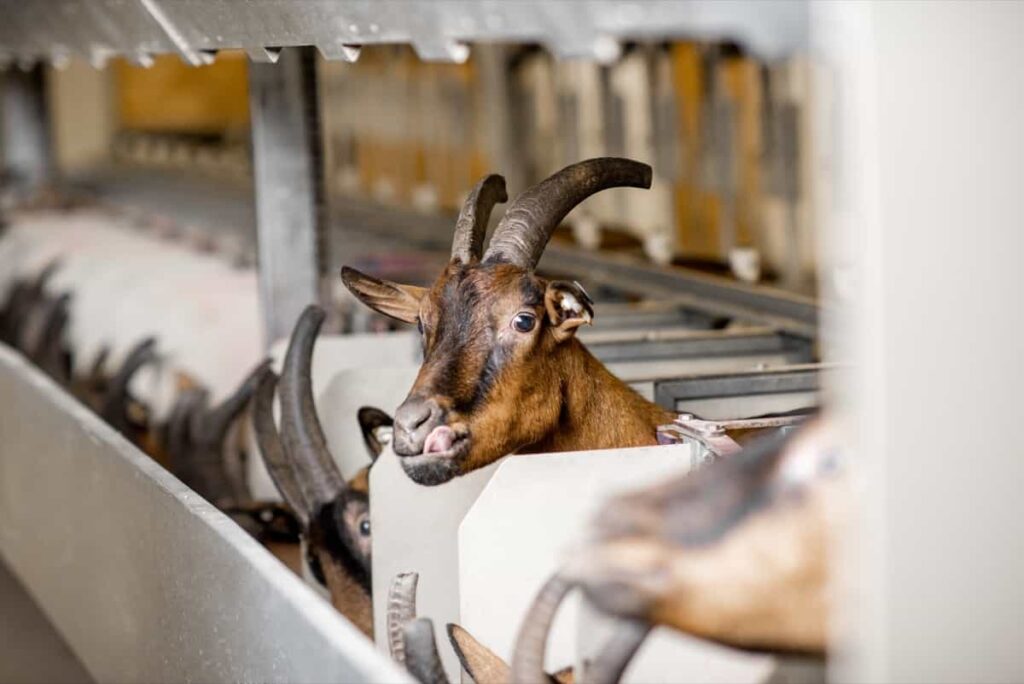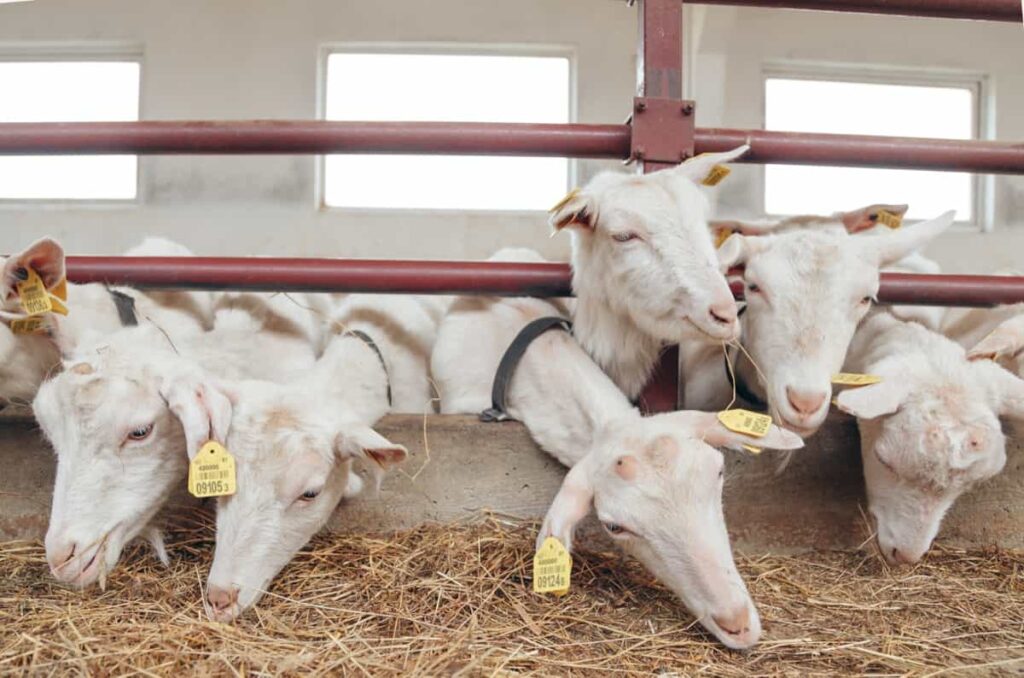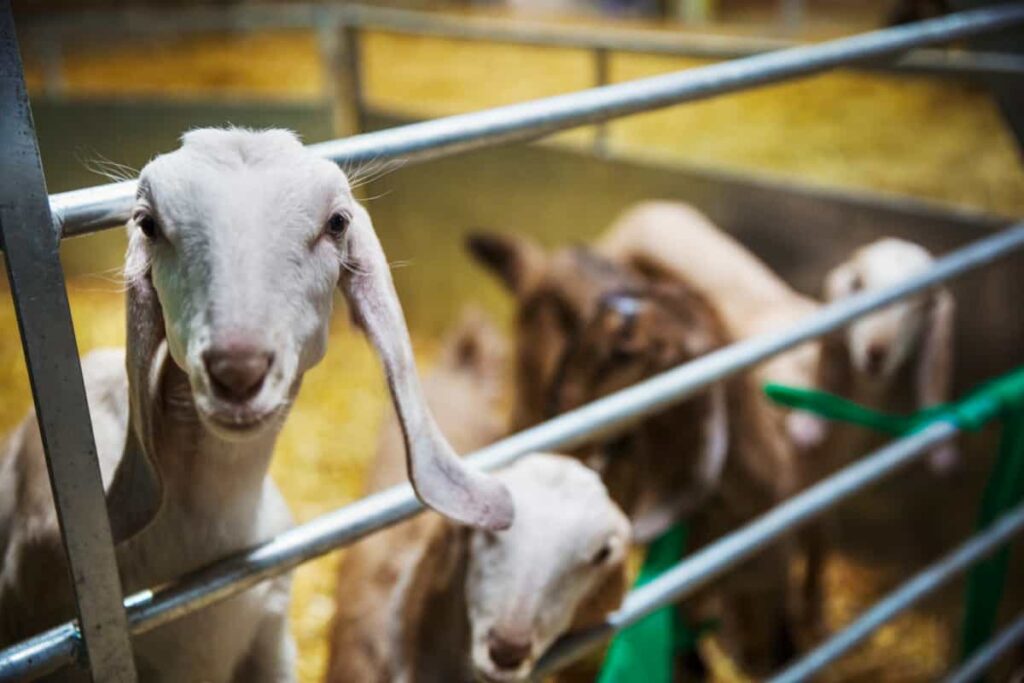Today, technology is revolutionizing the way goats are raised, cared for, and managed on farms all around the world. Innovative technological solutions have become indispensable tools for enhancing both productivity and profitability in goat farming operations. Modern goat farming operations have evolved significantly in recent years, thanks to the advancements in technology.

Technology in Modern Goat Farming
Innovative Technological Solutions for Enhancing Goat Health and Productivity
Advancements in technology have revolutionized the way we approach goat farming operations. Modern goat farming operations have seen a significant shift towards the utilization of technology for increased efficiency and productivity. The main solution is the implementation of automated feeding systems.
These systems ensure that each goat receives the right amount of feed at the right time, promoting optimal nutrition and growth. IoT devices are another remarkable addition to modern goat farming operations. These devices enable real-time monitoring of goat health and behavior. Creating optimal environmental conditions within barns or sheds where goats are housed requires climate control technology integration.
Implementing Automated Feeding Systems in Goat Farming
Traditionally, farmers would spend hours manually distributing feed to their goats. This not only consumed valuable time but also led to inconsistencies in portion sizes and feeding schedules. These advanced systems utilize sensors and smart algorithms to dispense feed based on individual goat requirements accurately.
In case you missed it: How to Maximize Profit in Goat Farming: Best Practices and Techniques

Automated feeding systems offer several benefits for both farmers and goats alike. They eliminate wastage by precisely measuring out portions reducing overfeeding or underfeeding scenarios. They save precious time and labor resources that can be redirected toward other important tasks on the farm.
Utilizing IoT Devices for Monitoring Goat Health and Behavior
Internet of Things devices are interconnected systems that collect and transmit data through sensors embedded in various objects. By utilizing IoT devices for monitoring goat health, farmers can quickly identify any abnormal behaviors or symptoms that may indicate illness or distress.
This allows for timely intervention and preventive measures to ensure the well-being of the goats. In addition to health monitoring, IoT devices can also provide valuable insights into goat behavior. By analyzing historical data collected by IoT devices over time using advanced analytics tools, farmers gain a deeper understanding of their herd’s overall health trends and behavioral patterns.
Integrating Data Analytics for Improved Breeding and Genetics Management
Data analytics has emerged as a game-changer in various industries, and modern goat farming is no exception. By harnessing the power of data, farmers can gain valuable insights into their herd’s breeding patterns and genetics management. Moreover, data analytics allows farmers to detect any potential health issues or hereditary diseases within their herd.
By identifying these problems early on, they can take proactive measures such as targeted medication or culling specific animals from the breeding program. By integrating data analytics into breeding programs, farmers can optimize their overall productivity and profitability.
Enhancing Goat Farming Efficiency with Robotic Milking Systems
These innovative systems bring numerous benefits to goat farmers, enhancing efficiency and productivity sustainably. With robotic milking systems, goats can be milked automatically without the need for manual intervention. This means that farmers no longer have to spend hours milking each goat by hand.
Instead, the automated system takes care of the entire process, from attaching teat cups to monitoring milk yield. Moreover, these systems provide valuable data on each goat’s milk production patterns. This information can be analyzed to identify any potential issues or irregularities early on, allowing farmers to take proactive measures for optimal herd health management.
Leveraging Drones for Precision Livestock Management in Goat Farming
Drones are being utilized for precision livestock management, providing farmers with valuable insights into their herds. Drones equipped with sensors and cameras can fly over pastures, capturing high-resolution images that help farmers assess the quality and quantity of available forage.
In case you missed it: How to Diversify Your Goat Farm by Adding Value-Added Products

In addition to monitoring grazing patterns, drones can also assist in identifying potential health issues within a herd. Drones allow farmers to perform visual inspections of infrastructure, such as fences or shelters, without physically accessing these areas. This saves time and effort while ensuring that all necessary repairs or improvements are promptly addressed.
Implementing Climate Control Technology for Optimal Environmental Conditions
Climate control technology allows farmers to regulate temperature, humidity, ventilation, and lighting within goat housing facilities. By creating a comfortable and controlled environment, farmers can mitigate stress factors that may affect goat health and performance. Proper temperature regulation is especially important as goats are affected by heat stress during hot weather.
Climate control systems can automatically adjust cooling or provide adequate shading to prevent overheating. Humidity levels play an important role in optimal conditions for goat welfare. Ventilation is another critical aspect of animal comfort. Adequate airflow helps remove moisture, ammonia buildup from waste products, and odors from the barns.
Utilizing RFID Technology for Livestock Tracking and Management
RFID tags in livestock are small devices that can be attached to goats’ ears or collars. These tags contain unique identification numbers that RFID readers can wirelessly scan. With this technology in place, farmers can easily monitor the whereabouts of their goats, ensuring they are accounted for at all times. The benefits of utilizing RFID technology for livestock management are numerous.
It removes the need for manual record-keeping, which can be time-consuming and prone to errors. Instead, farmers can rely on automated systems that provide real-time data on each animal’s location. RFID technology enables farmers to track valuable information about their goats, such as weight gain, health records, and breeding history. Furthermore, the use of RFID in goat farming operations promotes better overall herd management by allowing farmers to analyze trends over time.
Integrating Artificial Intelligence in Disease Detection and Management
Artificial intelligence (AI) has revolutionized various industries, and now it’s making its way into the world of goat farming. With AI-powered disease detection and management systems, farmers can ensure the health of their goats more effectively than ever before. AI technology can analyze data to detect early signs of diseases in goats. AI not only helps with disease detection but also assists in managing treatment plans for sick goats. These systems can provide recommendations for medication dosage, dietary adjustments, or isolation measures based on individual animal profiles.
Maximizing Efficiency through Smart Waste Management Systems
Today, smart waste management systems can automate this process, saving time and resources while minimizing environmental impact. These systems utilize sensors and automated machinery to efficiently collect, segregate, treat, and dispose of different types of waste generated on the farm. By implementing smart waste management systems on goat farms, farmers can enjoy several benefits. It helps reduce odors and potential health risks associated with accumulated waste.
In case you missed it: 11 Important Points to Consider for Bottle Feeding Goats

Proper disposal methods minimize the risk of contaminating water sources or spreading diseases among livestock. Moreover, these advanced systems also offer opportunities for recycling and repurposing organic wastes into valuable resources such as fertilizers or biogas for energy generation. This not only reduces reliance on external inputs but also contributes to a more sustainable agricultural model.
Frequently Asked Questions (FAQ) on Modern Goat Farming
What is the Role of Technology in Modern Goat Farming?
Technology plays a crucial role in modern goat farming by streamlining operations, increasing efficiency, and improving overall productivity. From automated systems for feeding and milking to advanced monitoring tools that track health parameters, technology empowers farmers to make informed decisions and provide optimal care for their goats.
Can Technology Help Monitor the Health of Goats?
Absolutely. Technology offers various methods for monitoring the health of goats remotely or through wearable devices.
Are There Technologies Available for Pasture Management?
Yes. Several technological solutions aid in effective pasture management on goat farms. Drones equipped with aerial imaging capabilities can assess grazing patterns and identify areas that require attention or rotational grazing interventions.
Conclusion
Modern goat farming operations utilize advanced technological solutions to enhance productivity, efficiency, and overall management. Modern goat farming operations play a crucial role in the agriculture industry, contributing to sustainable and efficient livestock production. The importance of embracing modern techniques cannot be overstated, as they bring numerous benefits to both farmers and consumers.
- Types of Grass Growing for Goat Farm
- How to Train Goats for Milking: A Beginners Guide
- Goat Milking Practices and Equipment: A Beginner’s Guide
- Goat Farming for Fiber: Producing Mohair and Cashmere
- Maximizing Goat Milk Production: Tips for Dairy Goat Farmers
- Goat Farming as a Family Business: Strategies for Success
- Profitable Kenya Goat Breeds for Commercial Dairy and Meat Business
- Unlock the Secrets of Oberhasli Goat: Discover Raising and Management Practices
- Ultimate Guide to Myotonic Goats: Explore Profile to Raising